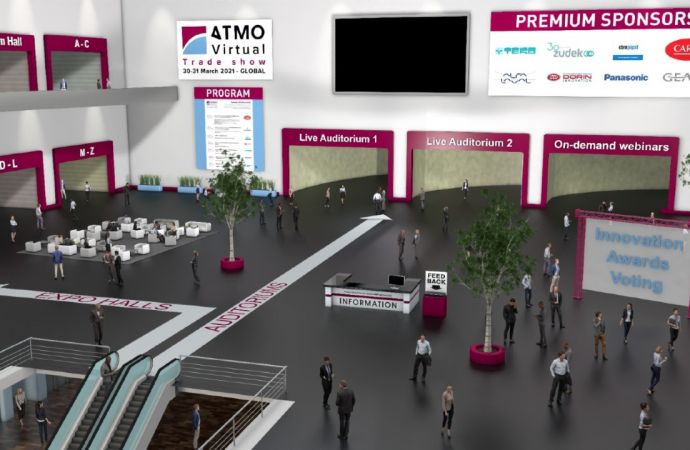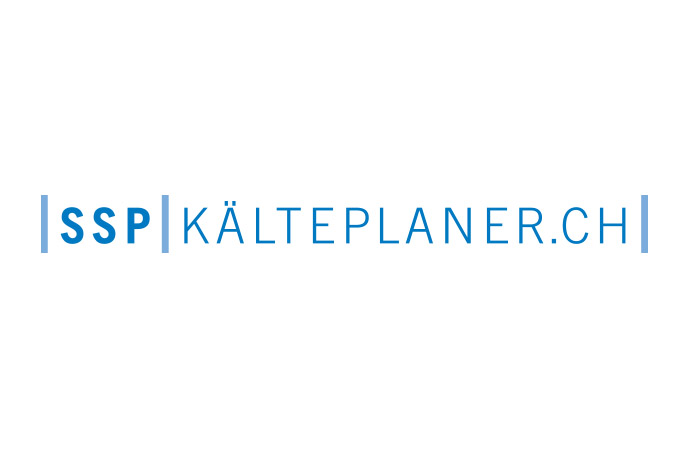ammonia21.com provides an overview of a selection of technical papers regarding ammonia that were presented on day 1 of the 9th edition of the Gustav Lorentzen conference on Natural Working Fluids currently being held in Sydney, Australia.

Close to 170 participants from 26 countries have gathered at the Sydney Convention and Exhibition Centre for the 2010 Gustav Lorentzen conference to explore latest research results and advances related to the use of natural refrigerants, including ammonia in refrigeration, air conditioning and heat pump systems.
AIR COOLED CHILLERS WITH AMMONIA, A. PEARSON, Star Refrigeration Ltd.
Andy Pearson presented a paper describing a new style of air-cooled chiller aimed at the commercial buildings market, which has also been used in industrial and leisure applications. Pearson discussed technical considerations in operating an air-cooled ammonia system, particularly in high ambients and in comparison with typical HFC chillers and presented 2 case studies from employing the system in 1. the conversion of a warehouse to a chilled distribution centre, using propylene glycol as the secondary refrigerant; and 2. the refurbishment of an ice rink.
Plate heat exchangers were selected as the evaporator, coupled with a low pressure receiver to keep the quantity of ammonia required in the system to a minimum, while a few of the tubes at the bottom of each condenser are connected into the oil circuit to provide the necessary oil cooling. The refrigerant charge for the air-cooled version is approximately 0.3kg/kW cooling capacity, which means that the largest chiller in the range has a charge of about 250kg. At the rated design conditions of 35°C ambient with water chilled from 12°C to 7°C the chiller CoSP is 3.1, and it has a seasonally-weighted efficiency ratio (SEER) of 4.2, comparing favourably with typical packaged chillers and qualifying as A-rated under Eurovent test conditions.
Finally, the presenter discussed further development possibilities, including the prospect of an oil-free ammonia chiller, offering simplicity in the system design and improved heat transfer in the evaporator. However, there seem to be no prospects in the near future of oil-free compressors in the right capacity range. Development of hermetic compressors for ammonia offers some more promising prospects, while further advantages could be delivered through the use of microchannel heat exchangers in the condensers. For air-cooled chillers in the range 200kW to 800kW ammonia is probably the most appropriate natural refrigerant to use, the presenter concluded.
ULTRA LOW CHARGED AIR COOLED AMMONIA CHILLERS, PEGA HRNJAK, Professor and Co-Director, Air Conditioning and Refrigeration Center University of Illinois, Urbana Champaign President, Creative Thermal Solutions, Inc.
Professor Hrnjak presented an analysis of the charge reduction potential in ammonia systems, focusing on air cooled chillers. Turning the focus to heat exchangers, the presenter singled out microchannel technology as the most rational approach for air cooled condensers, with microchannel technology demonstrating charge reduction and excellent heat transfer. Comparisons between serpentine flat macro tube and a parallel flow microchannel tube showed the superiority of the microchannel design. Hrnjak also presented the new hermetic ammonia compressors by Mycom as well as ongoing work in low charge microchannel condensers and systems with ammonia.
GROUNDWATER SYSTEM WITH AMMONIA HEAT PUMPS SAVES 70% OF ENERGY HENRIK WINTHER (GEA Grenco Køleteknik) AND MARCEL KLOOTWIJK (Energie Totaal Projecten)
Winther provided insights of an Aquifer Thermal Energy Storage (ATES) system with heat pumps for combined cooling and heating installed in a Danish hotel and conference centre with a total space area of 58.000m2. The system has been developed in the Netherlands and although it has become standard for large buildings, industry and greenhouses with more than 600 references in the last 20 years, the case study discussed concerned the first installation of its type in Denmark. The ammonia system has a better European Seasonal Energy Efficiency Ratio (ESEER) value than R-134a and at the same meets regulations in Denmark.
The ATES plant consists of 2 cold wells and 2 hot wells and it is designed for an extension up to 3 cold wells and 3 hot wells. Main components are 2 heat exchanger skids, 2 heat pumps and 2 dry coolers. There is also a plant specific distribution system on the hot and cold side. The plant can operate in 5 different modes and switches automatically between them. During the summer, the system uses deep level groundwater from “cold” wells to provide cooling to the buildings. The heated groundwater is re-injected into “warm” wells and stored underground. During winter, the cycle is reversed and the water is pumped from the warm well and cooled down by the ammonia heat pumps. The chilled water is stored in the “cold” well to be used the next summer. The heat recovered by the heat pumps is used for the heating systems for the buildings.
AIR COOLED CHILLERS WITH AMMONIA, A. PEARSON, Star Refrigeration Ltd.
Andy Pearson presented a paper describing a new style of air-cooled chiller aimed at the commercial buildings market, which has also been used in industrial and leisure applications. Pearson discussed technical considerations in operating an air-cooled ammonia system, particularly in high ambients and in comparison with typical HFC chillers and presented 2 case studies from employing the system in 1. the conversion of a warehouse to a chilled distribution centre, using propylene glycol as the secondary refrigerant; and 2. the refurbishment of an ice rink.
Plate heat exchangers were selected as the evaporator, coupled with a low pressure receiver to keep the quantity of ammonia required in the system to a minimum, while a few of the tubes at the bottom of each condenser are connected into the oil circuit to provide the necessary oil cooling. The refrigerant charge for the air-cooled version is approximately 0.3kg/kW cooling capacity, which means that the largest chiller in the range has a charge of about 250kg. At the rated design conditions of 35°C ambient with water chilled from 12°C to 7°C the chiller CoSP is 3.1, and it has a seasonally-weighted efficiency ratio (SEER) of 4.2, comparing favourably with typical packaged chillers and qualifying as A-rated under Eurovent test conditions.
Finally, the presenter discussed further development possibilities, including the prospect of an oil-free ammonia chiller, offering simplicity in the system design and improved heat transfer in the evaporator. However, there seem to be no prospects in the near future of oil-free compressors in the right capacity range. Development of hermetic compressors for ammonia offers some more promising prospects, while further advantages could be delivered through the use of microchannel heat exchangers in the condensers. For air-cooled chillers in the range 200kW to 800kW ammonia is probably the most appropriate natural refrigerant to use, the presenter concluded.
ULTRA LOW CHARGED AIR COOLED AMMONIA CHILLERS, PEGA HRNJAK, Professor and Co-Director, Air Conditioning and Refrigeration Center University of Illinois, Urbana Champaign President, Creative Thermal Solutions, Inc.
Professor Hrnjak presented an analysis of the charge reduction potential in ammonia systems, focusing on air cooled chillers. Turning the focus to heat exchangers, the presenter singled out microchannel technology as the most rational approach for air cooled condensers, with microchannel technology demonstrating charge reduction and excellent heat transfer. Comparisons between serpentine flat macro tube and a parallel flow microchannel tube showed the superiority of the microchannel design. Hrnjak also presented the new hermetic ammonia compressors by Mycom as well as ongoing work in low charge microchannel condensers and systems with ammonia.
GROUNDWATER SYSTEM WITH AMMONIA HEAT PUMPS SAVES 70% OF ENERGY HENRIK WINTHER (GEA Grenco Køleteknik) AND MARCEL KLOOTWIJK (Energie Totaal Projecten)
Winther provided insights of an Aquifer Thermal Energy Storage (ATES) system with heat pumps for combined cooling and heating installed in a Danish hotel and conference centre with a total space area of 58.000m2. The system has been developed in the Netherlands and although it has become standard for large buildings, industry and greenhouses with more than 600 references in the last 20 years, the case study discussed concerned the first installation of its type in Denmark. The ammonia system has a better European Seasonal Energy Efficiency Ratio (ESEER) value than R-134a and at the same meets regulations in Denmark.
The ATES plant consists of 2 cold wells and 2 hot wells and it is designed for an extension up to 3 cold wells and 3 hot wells. Main components are 2 heat exchanger skids, 2 heat pumps and 2 dry coolers. There is also a plant specific distribution system on the hot and cold side. The plant can operate in 5 different modes and switches automatically between them. During the summer, the system uses deep level groundwater from “cold” wells to provide cooling to the buildings. The heated groundwater is re-injected into “warm” wells and stored underground. During winter, the cycle is reversed and the water is pumped from the warm well and cooled down by the ammonia heat pumps. The chilled water is stored in the “cold” well to be used the next summer. The heat recovered by the heat pumps is used for the heating systems for the buildings.
MORE INFORMATION
Related stories
















